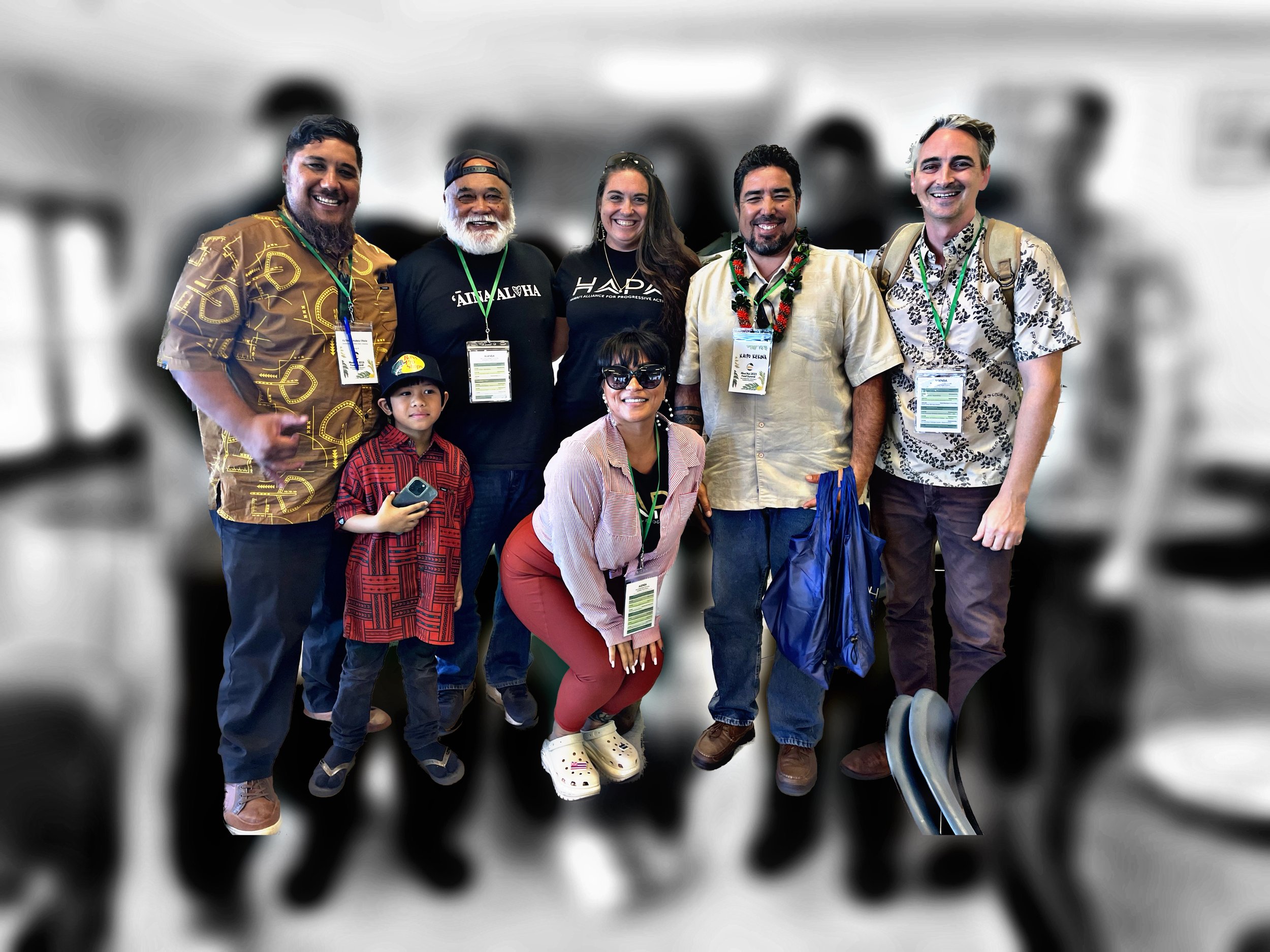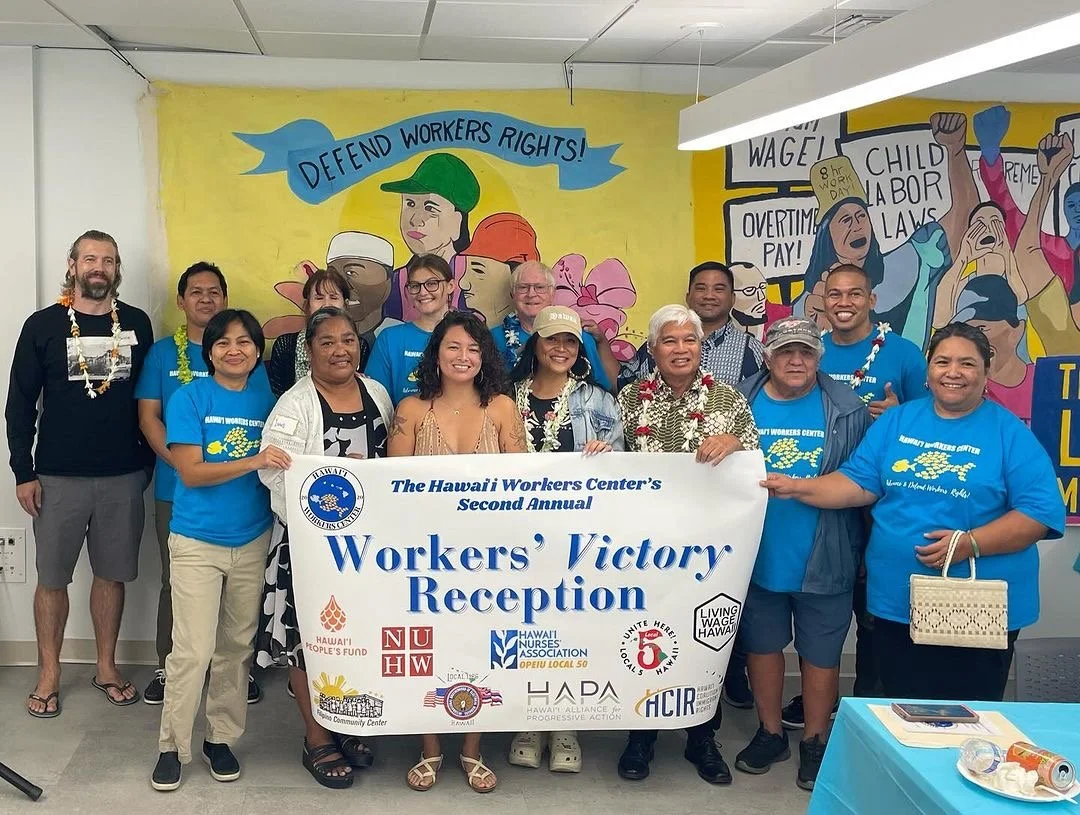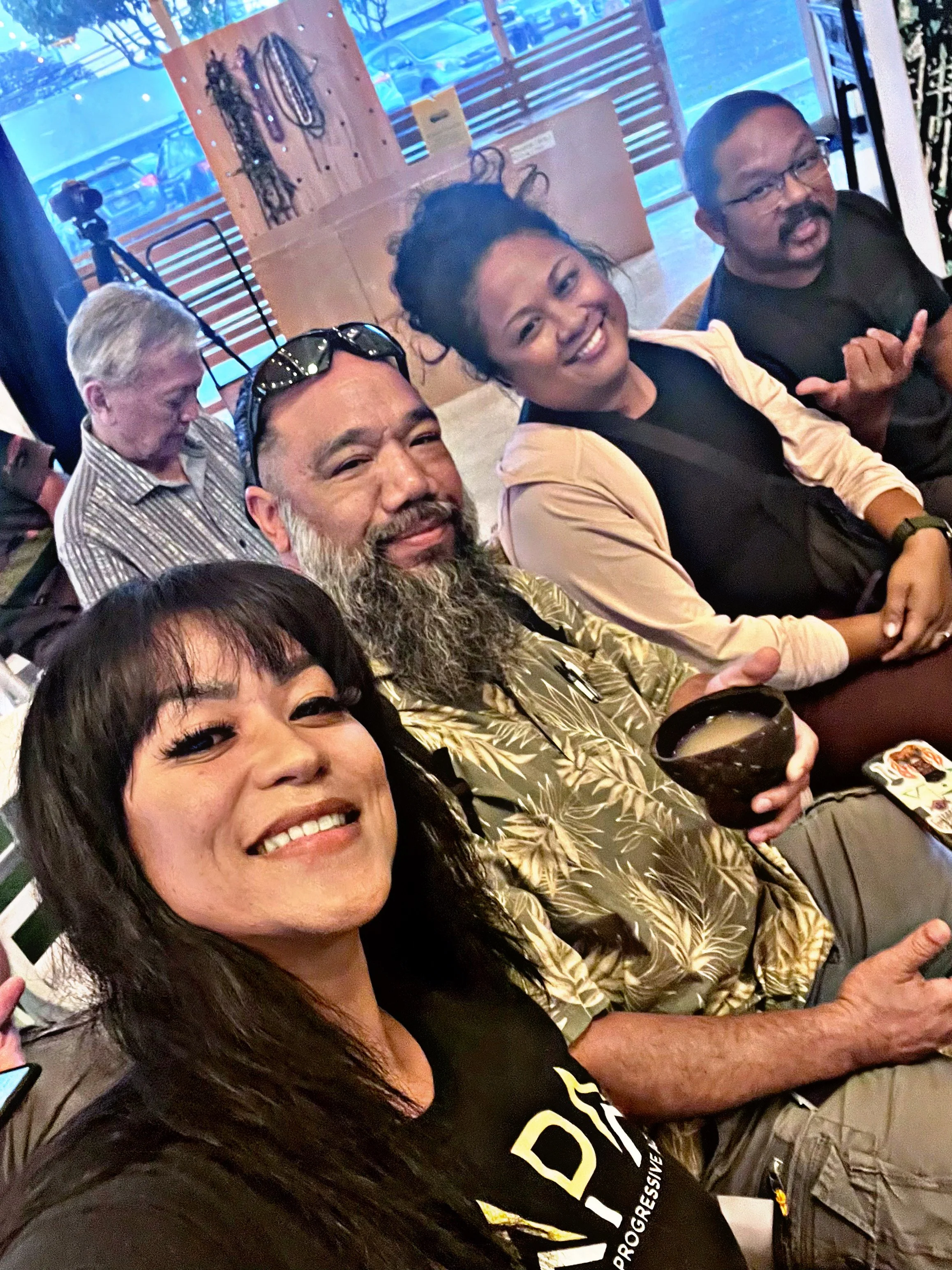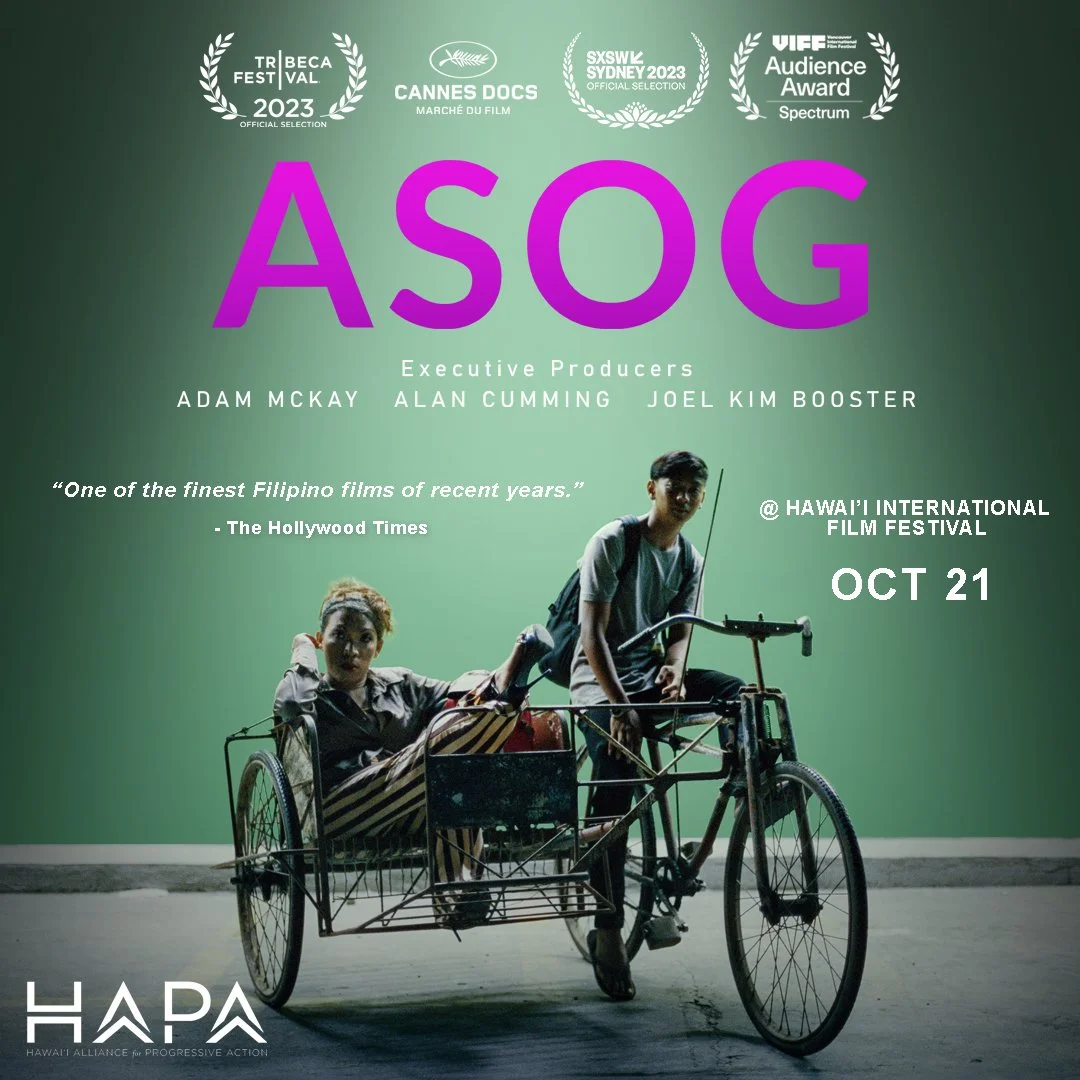PROGRAM AREA - CBRS
Community-Based Resource Stewardship
Our food systems are intertwined with the healthy stewardship of the land, fresh, and ocean waters; these socio-ecological dependencies have long been understood in a Kanaka ʻŌiwi worldview and reflected in ahupuaʻa management. Any pathways towards fixing our broken food system must heal the current disconnect between food production and natural resource management and center indigenous practices, worldviews, and leadership.
HAPA actively addresses environmental threats to Hawaiʻi's land, waters, and communities. Our campaigns focus on key areas such as:
* Mandating public agricultural lands for local food production.
* Protecting agricultural and public lands from unsustainable development and land grabs.
* Safeguarding water sources, including conservation lands, native forests, and aquifers.
* Restoring dewatered streams affected by plantation-era diversions.

CAMPAIGN
I Ola Wailuanuiahoʻāno
We are supporting a community-led initiative to halt the redevelopment of the former Coco Palms Hotel site in Kapaʻa, Kauaʻi. This site holds immense socio-ecological potential due to its rich traditions and its proximity to public conservation lands. I Ola Wailuanuiahoʻāno, supported by a strong community base, argues that the site should serve multiple functions rather than being transformed into yet another hotel, which would strain the community's already burdened infrastructure. Instead, the working committee proposes revitalizing the site's fishponds, promoting agriculture, and creating a cultural park that would benefit both tourists and local residents. The proximity to a large development for the Department of Hawaiian Homelands further strengthens this plan, as it aligns with the native Hawaiian population, living culture, and cultural practitioners who would bring the site to life.

CAMPAIGN
Ola i ka wai
Ola i ka Wai (Water is Life) is an enduring affirmation of the sacred value of water in Hawaiian culture. It is a rallying cry across the pae ‘āina to safeguard these resources for future generations, and a unifying thread with Indigenous and local communities across the world. Many of the organizations and community members in this group are some of the frontline leaders and supporters of the movement to Ho‘i ka Wai (Return the Water), so that “justice rolls down like waters and righteousness like a mighty stream”! Mahalo to the many community organizations working to restore streams and the ways of life that depend on them.

CAMPAIGN
Stop Maui Land Grabs
This is a hui comprised of community members of Maui, local pro-ono lawyers, organizations of the Hawaiian Kingdom, and abroad. We are dedicated in seeing a just recovery for the community and people of Maui.

CAMPAIGN
Water Protectors Rising
Water Protectors Rising is a Virual Panel Series we produce & host in partnership with Sierra Club of Hawaiʻi. We are also partnering with Sierra Club Hawai’i and the Water Protectors Legal Collective in 2023 panel(s) examining both the interconnected threats that water protectors face at home and around the world and strategies for addressing shared underlying root causes. This series discusses the strategies and importance that communities continue to pressure officials to resolve the Oʻahu threat and build international solidarity against the contamination and exploitation of water in Puerto Rico, Guam, Camp Lejuene, and Flint.
North Fork of the Wailua River
Kauaʻi Island— HAPA continues to advocate for a more equitable restoration of the North Fork of the Wailua River. Kauaʻi Island Utility Corporation (KIUC) is seeking a 65-year lease to divert over 2/3 the natural streamflow. The current status of this campaign is on hold as we await a contested case hearing on the proposed streamflow standards. Community concerns are as follows:
The proposed streamflow restoration is too low:
The Commission on Water Resource Management determines the minimum amount of water left in both Waiʻaleʻale and Waikoko Streams in their draft Instream Flow Standards (IFS). When the Commission came to Kauaʻi to vet these standards, the community sent a message, loud and clear, that the proposed 30% restoration was too low due to address the adverse cultural and environmental impacts. As the Commissioners began to debate how much to increase the streamflow restoration, KIUC called for a contested case, thus halting the process. Streamflow restoration advocates impacted by the diversions have joined the contested case.
When considering how much streamflow is of how Native Hawaiians traditionally managed resources for abundance. Multiple sources state that Hawaiians never took over half of the water from a stream channel (Nakuina, Tong 2014). However, it was much more complex than a simple figure:
“Nakuina affirms, “no ʻauwai was permitted to take more water than continued to flow in the stream below the dam. It was generally less, for there were those living makai and drawing water from it, whose rights had to be regarded.” This meant that you always left more water in the stream than in the ʻauwai because there was usually more than one ʻauwai on any given stream. Therefore, customary water allocation considered the water rights of everyone in the area and the ecosystem within the stream” (Tong 2014).
KIUC maintains that diverting the majority of Waiʻaleʻale and Waikoko Streams is necessary to operate their hydropower plants to generate approximately 1% of the island’s power. KIUC should explore other ways to meet its renewable energy goals that do not require the de-watering of streams.
Impacts of diversions on traditional and customary practices (T&C):
T&C practices in the area, include fishing, gathering, and the ceremonial use of water. No sufficient analysis has been conducted on how to mitigate the impact on the cultural practices in the area.
KIUC does not sufficiently recognize the overall cultural significance of Waiʻaleʻale, Waikoko and the entire ahupuaʻa of Wailua and the diversion structures' impact on the area.
It is important to note that these streams have been diverted and dewatered for over a century, since the plantation era. The opportunity to exercise cultural practices and rights for current and future generations should not be foreclosed because of past injustices.
65 years is too long for KIUC’s lease.
Long-term USGS studies have shown that rainfall and stream-flows in Hawaiʻi steadily decline. The rate of decline is only anticipated to increase with climate change. Given the uncertainty of future climate change impacts, it is hard to anticipate how accelerated these changes will be. With this level of uncertainty, a shorter lease is only prudent and would allow a more adaptive approach to managing our vital streamflow resources. Decision makers should exercise the precautionary principle in any long-term lease water allocations. In this case, a period of 10 years would be more appropriate.
West Kauaʻi Power Project
Kauaʻi Island— On the westside of Kauaʻi KIUC is proposing to divert 11MGD for a hydropower project and is seeking a 65 year lease. A draft Environmental Assessment (EA) is pending at the Board of Land and Natural Resources. HAPA supports the community call for a full Environmental Impact Study (EIS) which vets other alternatives beyond KIUC’s preferred scheme such as less consumptive pumped storage power production. As stated above, in relation to Wailua based on the projected decrease in rainfall due to climate change, 65 years is simply too long of a lease. Furthermore this project provides downstream agrochemical tenants in Mānā with 3.5MGD. There is no further information or proposal for how this 3.5MGD will support the vaguely defined “diversified agriculture” on the Mānā plain in KIUC’s EA. Rather than provide a detailed plan, vague promises of diversified agriculture appear to be another “water grab” by a powerful agrochemical corporate tenants for extractive use.
Check out our Community-Based Resource Stewardship!

































